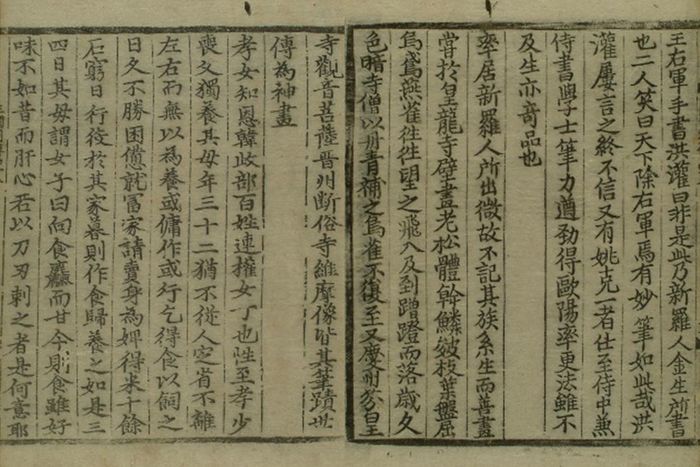(Translation) 2019 率居
| Primary Source | ||
|---|---|---|
 |
Title | |
| English | Solgŏ | |
| Chinese | 率居 | |
| Korean(RR) | 솔거(Solgeo) | |
| Text Details | ||
| Genre | ||
| Type | ||
| Author(s) | 金富軾(Kim Busik) | |
| Year | 1145 | |
| Source | 三國史記(Samguk sagi) | |
| Key Concepts | ||
| Translation Info | ||
| Translator(s) | Participants of 2019 JSG Summer Hanmun Workshop (Intermediate Training Group) | |
| Editor(s) | ||
| Year | 2019 | |
Original Script
Translation
Student Translation : Hector Sanchez
Solgŏ was a man from Silla. His place of origin is insignificant. Thus, [we] do not record his family history. Since birth, he was good at painting. In the past, at the walls of Hwangnyong temple, he painted an old pine. The trunk was scaly and chapped. The branches and leaves were entwined and twisted. Crows, kites, swallows, and sparrows often looked at it and entered [the temple] flying. When they arrived, flouncing and floundering they fell. After a long time had passed, the colors faded. Monks from the temple, by means of cinnabar and ch’ŏng [pigments,] restored it. Crows and sparrows did not come afterwards. Moreover, the Kwanŭm bodhisattva at Punhwang temple in Kyŏngju and the image of Vimalakīrti at Tansok temple in Chinju, were both painted by his brush. Generations passed down [the practice of] taking them to be divine paintings.
From the Samguk sagi, fascicle 48.
- Discussion Questions:
abcd